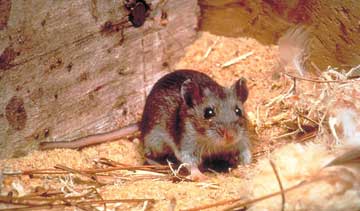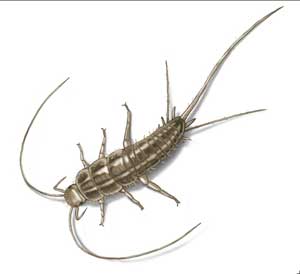
Main offenders
By BILL MELVILLE
General Orkin PCO Services pest threating your packagingA guide to fuller understanding of pests threatening your packaging operations
When it comes to survival of the species, food, water and shelter are three common threads for mankind and pests alike. But sharing them, willingly or not, is a terrifying thought—not only for food packaging operations but for every self-respecting packaging and production plant out there.
If left unchecked, pests like rodents, insects or birds would not mind spending their entire lives inside your packaging plant—especially if it supplies the vast food-and-beverage sector.
For the packaging products producers, such pests are a particularly damning concern, as it only takes one pest making its way inside, or leaving a visible trace on a packaging product to do virtually irreparable harm to your company’s hard-earned reputation.
As damaging as that may be, the real health risks posed by pest infestation to both employees and consumers pose an even greater threat to a company’s viability and longevity.
For most typical pests, manufacturing and packaging facilities provide a highly tempting target for residence—offering warmth, protection from outside elements and predators and, for the more industrious types, enough food and water to ensure sufficient sustenance to keep themselves alive and propagating.
Driven by very strong survival instincts, pests will inevitably find a way of getting inside your industrial facility given the slightest opportunity to do so, be it by breaking in through already-present cracks in the facility’s physical structure; via the landscaping set-up; or simply by living in and around your plant’s garbage bins and containers.
To safeguard your operations from being victimized by this omnipresent threat, it is important to retain the services of a reputable pest management professional or services provider, as well as to familiarize yourself with some of the most common pests and the potential damage they can cause.
 RODENTS
RODENTS
One of the most common pests encountered by packaging facilities are rodents.
Rodents are mammals, characterized by a pair of incisor teeth in the upper and lower jaw that grow throughout the creature’s life, and can only be kept in check by gnawing.
Contrary to popular belief, rodents are not necessarily a seasonal pest problem. While it is true that a rodent is more likely to seek out shelter when the weather begins to cool down, it is involved in the search for food sources on a year-round basis, making your plant susceptible at any given time of the year.
Most pest management professionals will unanimously acknowledge that the exterior of your building should be the first line of defense against these pests because the best way to create a deterrent is by managing the problem from the outside first—thereby preventing their entry into the building to begin with.
In addition to carrying diseases such as Hantavirus and Salmonella, rodents can also easily contaminate packaged food products with their hair, urine and fecal matter.
In addition to health implications, rodents can cause substantial damage to the facility infrastructure. Because rodents can sometimes mistake wires for tree roots, for example, their constant gnawing has potential to spark an electrical fire.
Being nocturnal creatures, rodents can be very difficult to spot during the day, but they do leave enough visible evidence in their wake to enable you to determine their presence—provided you know what you’re looking for.
• Droppings. A strong indicator of a mouse infestation are visible rodent droppings, most measuring about the size of a grain of rice. The softer the dropping, the stronger the indication of recent infestation activity.
• Gnaw marks. Because rodents are always gnawing at something, you should look for small holes along the base of your walls, or behind machinery and equipment that appears to be chewed or gnawed.
• Rub markings. Because rodents feel protected when they crawl along a wall, it is important to look for any greasy markings low on the walls, which indicate that a rodent is regularly traveling down the same path.

Keeping an updated record of facility inspections is an important part of effective pest control programs.
There are three main commonly-used strategies for addressing the rodent problem, including:
• Keep garbage dumpsters covered and at a safe distance from your building.
If rodents are going to get into your trash, it’s best to have them doing so as far away as possible from your facility.
It is a good idea to clean and rotate dumpsters on a regular basis to disturb any pests in residence, as well as requesting regular trash pickup in order to keep the garbage, and its resulting odors, from sitting around for too long.
• Trim all the vegetation around you plant so that it is kept at bay at least one meter away from your facility, thus removing many possible hiding areas in close proximity to the building.
Also consider installing a 75-centimeter-wide gravel strip around the perimeter of your building as a means to create another open area—thereby leaving the rodents exposed.
• Inspect the exterior of your building for any holes or cracks—sealing these openings with a proper weather resistant-sealant—and consider installing copper-mesh fencing to prevent rodents from gnawing their way through.
BIRDS
While the species does not immediately jump to mind as a pest, certain types of birds—specifically pigeons, sparrows and starlings—can easily infest and damage you facility structures.
Because packaging facilities may not have stringent door controls found at many food-processing plants, open entryways such as loading docks can provide easy access for birds to enter inside to roost and nest.
Not only can hardened bird droppings do potential damage to your operating machinery, along with nesting materials they can often carry unacceptable levels of bacteria, fungal agents and ectoparasites that may cause serious illnesses like Encephalitis, Meningitis or Salmonella.
Fortunately, there are available solutions for addressing the bird infestation problem without resorting to the use of poisons or toxic chemicals, which will often do more harm than good.
In order to facilitate a safe and humane removal of birds in a way that will not compromise your facility or community bylaws, your pest management services provider should be well-versed in all local regulations governing the ethical treatment of birds.
Being one of the most common pest birds, pigeons typically tend to gather together in large flocks—looking for places like ledges to congregate and leaving messy droppings in their wake.
 Commonly found in urban areas, pigeons are associated with more than 50 different diseases. Being able to eat just about anything remotely edible, these small quick birds are extremely adaptable and territorial—banding together in large groups in order to force other types of birds out of their established territory.
Commonly found in urban areas, pigeons are associated with more than 50 different diseases. Being able to eat just about anything remotely edible, these small quick birds are extremely adaptable and territorial—banding together in large groups in order to force other types of birds out of their established territory.
For their part, sparrows are extremely prolific breeders—meaning that their numbers can multiply exponentially once they’ve established a foothold at your operation.
Like pigeons, starlings also tend to gather in large numbers and force out other avian species—making home in the building’s nooks and crannies.
Unbothered by noise and lights, they will also eat just about anything, and with an average of 20 offsprings a year, their sheer numbers can quickly become overwhelming.
Like rodents, birds can manifest their presence in several visible ways:
• Socializing and Loafing.
Birds tend to congregate in what is called a “loaf,” in one particular spot or area, with rooftops, building siding and light fixtures being some of their most preferred shelter destinations.
Any relocation or removal of nesting birds should be performed by a fully-licensed professional with all the required proper protective equipment and associated training.
• Sleeping and Roosting.
Birds tend to roost on flat surfaces, which is why they are often found on roof ledges or beams. Unlike loafing birds, roosting birds aren’t easily discouraged from taking shelter at your plant.
• Breeding and Nesting.
Because birds build nests on your property to raise their young, removing breeding birds becomes very difficult without removing or destroying their nests.
As with rodents, prevention is far more preferable to the cure, and some of the more effective preventative measures include:
• Using physical repellants to target loafing or roosting birds—including spikes or tacky gels—as well bird as scare devices such as electronic noisemakers to frighten the birds away.
• Installing netting around HVAC (heating, ventilating and air-conditioning) systems and other such areas to create strategic zones of exclusion—thus keeping breeding birds from building their nests there.
• Sealing holes in your building’s exterior to prevent small birds from making your building’s facade their new home is especially important when dealing with starlings, which can squeeze themselves in openings as small as one-inch-diameter.
 INSECTS
INSECTS
It is important to be aware of the broad variety of insect pests trying to make their way into packaging facilities.
Also known as ‘paper pests,’ insects such as psocids (booklice), firebrats and silverfish are typically found in damp, warm conditions similar to a typical facility or warehouse environment.
With their voracious appetites, these paper pests can feast indefinitely on paper and boxboard packaging, as well as the adhesives used to hold the paper-based packaging together—resulting in significant unforeseen costs and product damage.
Eating paperboard of corrugated packaging—or food—can be an expensive scenario for any company involved in food packaging, as it may require throwing out a lot of product.
While psocids have not been identified as a known disease-carrier per se, there is some anecdotal evidence linking their presence to asthma attacks in humans, while their endless appetite for grains and glue adhesives can be a nightmare for any serious quality assurance process.
For their part, firebrats and silverfish prefer hot and humid conditions.
As nocturnal insects, these paper pests prefer to hide during the day in small cracks and crevices, making them hard to spot, and they are more than willing to travel far distances for food.
Once they discover a new food source, they will stay put until it runs out, if undetected.
Dealing with paper pests effectively requires thorough, regular inspection of high-humidity areas, such as storage closets and boiler rooms, and around space heaters or operating equipment—looking for the distinct yellow stains left by firebrats and silverfish as their calling cards.
The best way to prevent their unwelcome presence requires proactive implementation of several key preventive practices:
• Cleaning up spills immediately after they occur, while regularily checking storage closets, employee areas and bathrooms for any excess moisture;
• Eliminating all other water sources—such as leaking HVAC units, broken pipes or standing water—outside the facility;
• Storing wood pallets in dry areas and discarding any damp or damaged pallets that are prone to molding;
• As much as possible, lowering and keeping your plant’s humidity levels at less than 50 per cent at all times.
Understanding their industry inside out is an essential prerequisite for all successful packaging professionals, and that includes understanding the pest infestation problem, which can literally strike at any time for seemingly no apparent reason.
Getting your staff on-board with regular facility inspections and monitoring is an important step in this quest, along with working closely with your fully-accredited professional pest control services provider to implement an effective action plan.
Bill Melville is quality assurance director for Orkin PCO Services in Mississauga, Ont.
Advertisement

